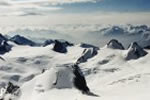


 |
 |
 |
Moraine is material transported by a glacier and then deposited. There are eight types of moraine, six of which form recognisable landforms, and two of which exist only whilst the glacier exists.
The types of moraine that form landforms
are Ground, Lateral, Medial,
Push, Recessional and Terminal.
The two types only associated with glacial ice are Supraglacial
and Englacial moraine.
Ground
Moraine
Ground moraine is till deposited over the valley floor. It has no obvious features
and is to be found where the glacier ice meets the rock underneath the glacier.
It may be washed out from under the glacier by meltwater streams, or left in
situ when the glacier melts and retreats.
Top of Page
Lateral
Moraine
Lateral moraine forms along the edges of the glacier. Material from the valley
walls is broken up by frost shattering and falls onto the ice surface. It is
then carried along the sides of the glacier. When the ice melts it forms a ridge
of material along the valley side.
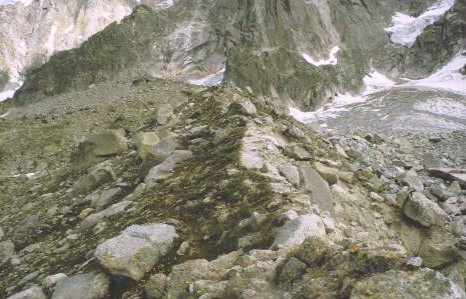
In the photograph above, the lateral moraine ridge marks the edge of a past glacier of much greater proportions than the one existing today. The present glacier can be seen top left of the image, and is clearly much reduced in size.
Top of Page
Medial
Moraine
Medial moraine is formed from two lateral moraines. When two glaciers merge,
the two edges that meet form the centre line of the new glacier. In consequence
two lateral moraines find themselves in the middle of the glacier forming a
line of material on the glacier surface. The existence of a medial moraine is
evidence that the glacier has more than one source. When the ice melts it forms
a ridge of material along the valley centre.
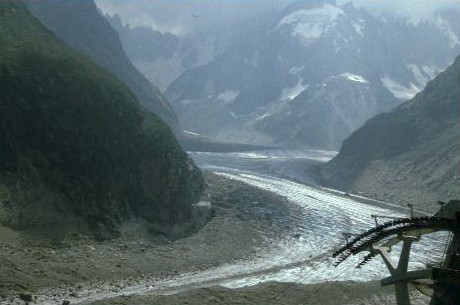
Top of Page
Push Moraine
Push moraines are only formed by glaciers that have retreated and then advance
again. The existence of a push moraine is usually evidence of the climate becoming
poorer after a relatively warm period. Material that had already been deposited
is shoved up into a pile as the ice advances, and because most moraine material
was deposited by falling down not pushing up, there are characteristic differences
in the orientation of rocks within a push moraine. A key feature enabling a
push moraine to be identified is individual rocks that have been pushed upwards
from their original horizontal positions.
Top of Page
Recessional
Moraine
Recessional moraines form at the end of the glacier so they are found across
the valley, not along it. They form where a retreating glacier remained stationary
for sufficient time to produce a mound of material. The process of formation
is the same as for a terminal moraine, but they occur where the retreating ice
paused rather than at the furthest extent of the ice.
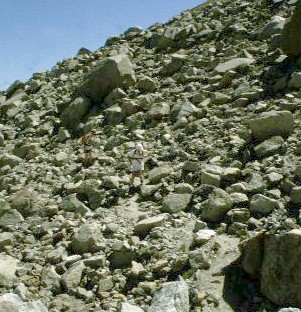
Top of Page
Terminal
Moraine
The terminal moraine forms at the snout of the glacier. It marks the furthest
extent of the ice, and forms across the valley floor. It resembles a large mound
of debris, and is usually the feature that marks the end of unsorted deposits
and the start of fluvially sorted material.
Supraglacial
Moraine
Supraglacial moraine is material on the surface of the glacier, including lateral
and medial moraine, loose rock debris and dust settling out from the atmosphere.
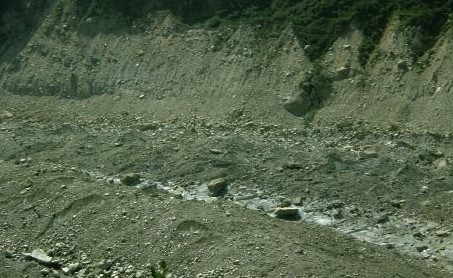
Englacial
Moraine
Englacial moraine is any material trapped within the ice. It includes material
that has fallen down crevasses and the rocks being scraped along the valley
floor.
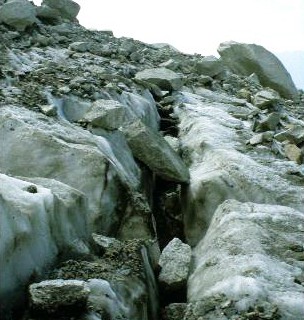
We value
your ideas and suggestions. Please contact the
maintainer of this site.
This page
can be found at: http://www.geography-site.co.uk
Last update to
this statement was on:
February 23, 2006
© Copyright Geography Site